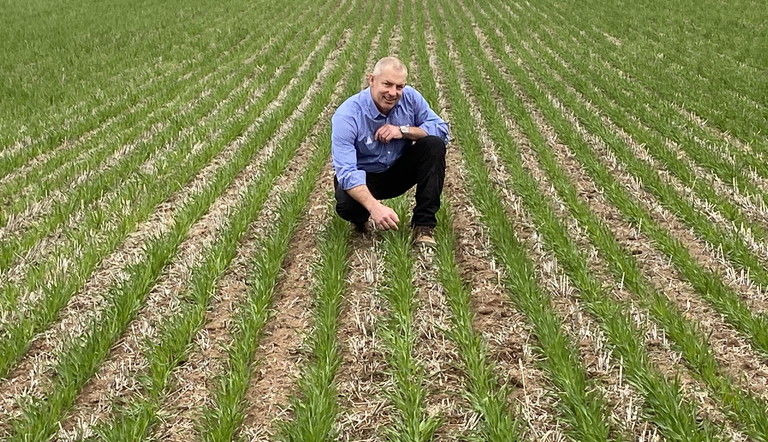
New fungicides answer grower wish list

They can look forward to additional options for controlling diseases and assisting disease resistance management; flexibility of treatment timings; and, critically, crop safety in mixes with various other protection and input products, allowing convenient, one-pass applications and further enhancing disease control and resistance management.
ADAMA Australia has introduced both Maxentis® EC and Proviso® fungicides to the local industry for use in canola, wheat, barley and oat crops this season. The two new products add to one of the most extensive fungicide ranges in the industry, tackling diseases in all major broadacre crop types.
Maxentis is a unique co-formulation of two of the world’s most effective fungicides, prothioconazole and azoxystrobin. As a Group 3 and 11, dual mode of action fungicide, it provides improved disease control spectrum, efficacy and resistance management, as well as an important rotation option following commonly used in-furrow and seed treatment fungicides.
Maxentis can be applied safely at various crop stages and with a range of other crop protection and nutrition products with reduced risk of crop damage.
Rapidly absorbed by leaves, it controls key diseases including seedling and upper canopy blackleg and sclerotinia in canola, as well as rusts, powdery mildew, septoria, yellow leaf spot, scald and ramularia in cereals, while it also features Australia’s first registered claim for control of physiological leaf spot (PLS) in barley.
Proviso is a novel prothioconazole fungicide featuring ADAMA’s unique Asorbital™ technology, which enables enhanced uptake and systemic activity for improved efficacy, compatibility and crop safety.
Prothioconazole has shown to be the most effective demethylation inhibitor (DMI) fungicide for controlling various diseases, including net blotch populations with low and developing levels of resistance. However, rather than simply introducing another prothioconazole fungicide, ADAMA strived to develop an all-new formulation of the proven active ingredient to ensure real and tangible benefits to growers.
Proviso can be used in tank mixes with a range of other crop protection and nutrition products, controlling a broader range of diseases in canola and cereals, including fusarium head blight in wheat, and to assist disease management. It can be ideally applied as the first foliar application following the use of Succinate Dehydrogenase Inhibitor (SDHI) or strobilurin-based fungicides on seed or in-furrow.
ADAMA Australia Portfolio Manager – Fungicides, Matt Sherriff, said the arrival of Maxentis and Proviso fungicides would take the headache out of disease management for many canola and cereal growers.
Matt said research had confirmed Maxentis offered better crop safety than existing benchmark fungicides whether applied alone or in tank mixes, and it was a similar story for Proviso with its unique formulation.
“Growers will be aware of crop safety and mixing issues when tank mixing various crop protection and nutrition products. Maxentis and Proviso are safer formulations for applications in mixtures, allowing growers to cover their crops in one pass,’’ Matt said.
“Compared with using other fungicides, they will have more flexibility than they have had before to go with various tank mixes from an early stage.’’
He said Maxentis was one of the few fungicides registered for use in canola containing azoxystrobin and it could be included with top-up applications of herbicides like atrazine as early as the four to six-leaf crop growth stage, as could Proviso.
“This is when a lot of blackleg is coming in and developing resistance to both seed variety genetics and seed treatment fungicides.’’
Maxentis can be applied through to the flag leaf stage in cereals and Matt said it would be particularly valuable as an alternative mode of action group in cases where SDHI fungicide already had been applied on seed or in-furrow.
In oats, he said the azoxystrobin component could offer potential greening benefits, while the fungicide’s mixing capability and rapid absorption would be strongly welcomed.
Matt said Proviso was a more cost-effective and adaptable fungicide, and, to enhance its effectiveness, could be applied with a host of tank mix partners, many of which are conveniently listed on the product label.
He said growers could also have confidence in the knowledge that even where resistance may be developing to any triazoles, prothioconazole was the most effective of these fungicides and by using Proviso, they could avoid paying for additional active ingredients that may now be less effective.
Maxentis and Proviso fungicides were recently included in 30 trials across the country, where they demonstrated their mixing capability with numerous products, crop safety and effectiveness against all major diseases compared with existing standards.
For further information on the new Maxentis and Proviso fungicides, growers can contact their local ADAMA Australia representative, sales agent or visit ADAMA.com.
*Maxentis & Proviso APVMA Registration is pending.
Maxentis and Proviso fungicides will take the headache out of disease management for many canola and cereal growers.